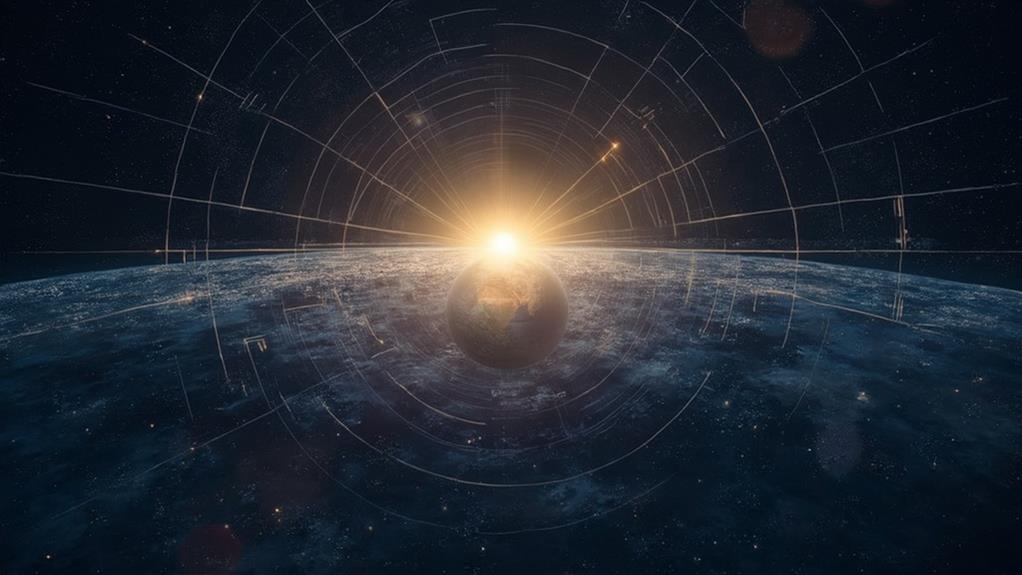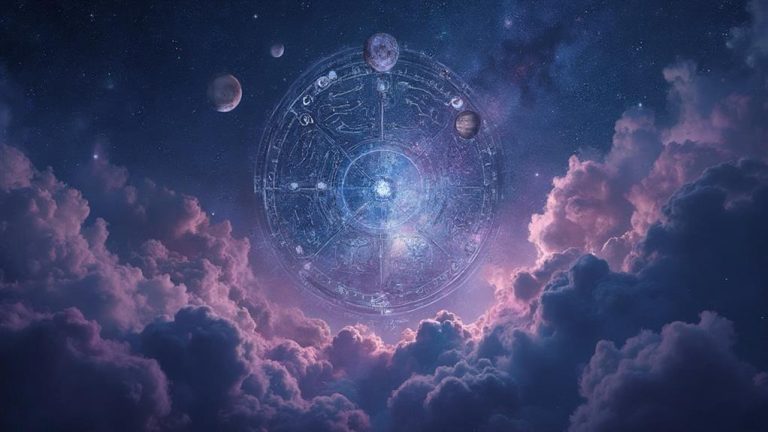Understanding the Celestial Equator in Astrology

The celestial equator is an imaginary line that divides the sky into the northern and southern hemispheres. It’s essential in astrology as it helps interpret how planetary energies shift throughout the year.
Mastering this concept enhances the ability to read natal charts and predict astrological trends. The celestial equator serves as a guide for understanding how celestial events influence life on Earth.
What Is The Celestial Equator

The Celestial Equator is an imaginary line extending Earth’s equator into space, dividing the celestial sphere into northern and southern halves. It helps measure celestial coordinates and is crucial at the equinoxes where day and night are equal.
This line intersects the ecliptic at a 23.5-degree angle, influencing seasonal changes and helping astrologers calculate the positions of celestial bodies for accurate interpretations.
Celestial Equator vs Ecliptic Plane
The celestial equator and ecliptic plane intersect at the equinoxes. While the celestial equator is Earth’s equator projected into space, the ecliptic represents the Sun’s apparent annual path across the sky.
The 23.5-degree angle between them creates Earth’s axis tilt, causing seasons and affecting astrological phenomena.
Basic Differences and Definitions
The celestial equator splits the sky into northern and southern hemispheres, while the ecliptic plane marks the Sun’s path. These two planes intersect at the vernal and autumnal equinoxes, heralding the start of Aries and Libra seasons.
Astrologers use this intersection to map planetary movements and zodiacal influences.
Angular Relationship Explained
There’s a 23.5-degree tilt between the celestial equator and the ecliptic plane, which defines Earth’s seasonal cycles and planetary positions. This angle also produces declination values used in astrology to evaluate planetary strength.
As planets shift relative to these planes, they form significant alignments like parallel and contra-parallel aspects, providing insight into the effects of celestial interactions.
Seasonal Navigation Impact
The celestial equator affects Earth’s position relative to the Sun, influencing seasonal changes and astrological insights. At the equinoxes, day and night are equal, while solstices mark times of maximum daylight or darkness.
These changes shape how we perceive cosmic energies, guiding timekeeping and spiritual practices.
Planetary Declinations

Planetary declinations show a planet’s movement relative to the celestial equator. These declinations range from 0° to ±23.5°, depending on how far north or south the planet is seen from Earth.
When planets reach their highest declination, their energy peaks. Parallels (same side) intensify their alignment, while contra-parallels (opposite sides) create tension, adding depth to astrological insights.
Northern and Southern Celestial Hemispheres
The celestial equator divides the sky into northern and southern hemispheres, each influencing astrology differently. In the Northern hemisphere (Yang energy), planetary energies are more outward and social.
In contrast, the Southern hemisphere (Yin energy) channels planetary forces inward, focusing on personal growth. Understanding this improves the interpretation of planetary placements.
Equinoxes and Solar Movement

During the Spring and Autumn Equinoxes, the Sun aligns with the celestial equator to create equal hours of daylight and darkness, symbolizing cosmic balance.
This is a powerful time for spiritual practices, marking the transition of the Sun between the northern and southern hemispheres.
Solar Path at Equinoxes
The Sun crosses the celestial equator during the vernal and autumnal equinoxes, giving equal day and night. This alignment symbolizes balance and invites reflection on cosmic energies.
During these periods, the Sun rises directly east and sets in the west, representing the harmony of universal forces.
Day-Night Balance Cycles
Earth’s axial tilt causes changes in day-night lengths. During the equinoxes, day and night are equal globally, symbolizing cosmic balance.
The solstices show extremes, with the longest and shortest days of the year. These cycles provide a framework for understanding seasonal and astrological dynamics.
Astrological Houses and Equatorial System
Astrological houses are based on the equatorial system, which helps distribute energy across the sky. The Ascendant-Descendant axis marks the first and seventh house cusps, derived from the intersection of local space coordinates and the celestial equator.
Similarly, the MC-IC axis, perpendicular to the celestial equator, forms the tenth and fourth house cusps, linking cosmic energy to material life.
- The Ascendant shapes your identity and interactions, while the Descendant reflects partnerships.
- The MC channels career and public life, whereas the IC focuses on home and roots.
Seasonal Effects on Interpretation

Seasonal shifts along the celestial equator affect astrological interpretations. In the summer, when the Sun is above the equator, outward expressions of energy dominate themes like career and public life.
During winter, when the Sun is below the equator, introspective and subconscious themes come to the forefront.
Parallel Aspects in Astrology
Parallel aspects form when two planets share the same declination, intensifying their combined energies. These aspects offer powerful insights into karmic patterns and soul connections.
Contra-parallel aspects (opposing declinations) create tension, similar to an astrological opposition. Both aspect types add depth to natal chart analysis and prediction.
Frequently Asked Questions
How Does the Celestial Equator Affect Retrograde Planets?
The celestial equator influences retrograde planets by altering their motion across astrological houses. When planets cross the equator while in retrograde, the backward motion highlights unaddressed energies in your chart.
Can the Celestial Equator Influence Synastry Compatibility Between Two Charts?
Yes, the celestial equator affects synastry by creating energetic alignments when planets interact with this line in both charts. These alignments can either enhance or challenge relationship dynamics.
Do Fixed Stars Near the Celestial Equator Have Special Astrological Significance?
Fixed stars near the celestial equator are important because they’re visible from both hemispheres, thus impacting many natal charts. Their constant presence amplifies their influence on spiritual paths and life patterns.
What Role Does the Celestial Equator Play in Mundane Astrology Predictions?
The celestial equator is central to mundane astrology, where its intersections with the ecliptic influence collective and global events. This positional alignment is used to foresee significant historical and societal changes. Astrologers often examine the relationship between the celestial equator and key planetary movements to interpret shifts in political, economic, and cultural patterns. The celestial equator in astrology serves as a guiding framework for understanding how cosmic forces may align with earthly transformations. By analyzing these celestial intersections, astrologers aim to uncover deeper insights into the interconnectedness of humanity and the universe.
How Does Celestial Equator Positioning Affect Lunar Nodes and Karma?
When the celestial equator aligns with lunar nodes, it intensifies karmic events and unlocks transformative spiritual insights. These junctions empower personal growth through self-awareness and cosmic understanding.
Conclusion
The celestial equator provides crucial insights into astrology by influencing planetary energies and uncovering hidden karmic truths.
By mastering these celestial relationships, you can interpret charts more deeply, revealing the cosmic dance between celestial bodies and their effects on life here on Earth.







